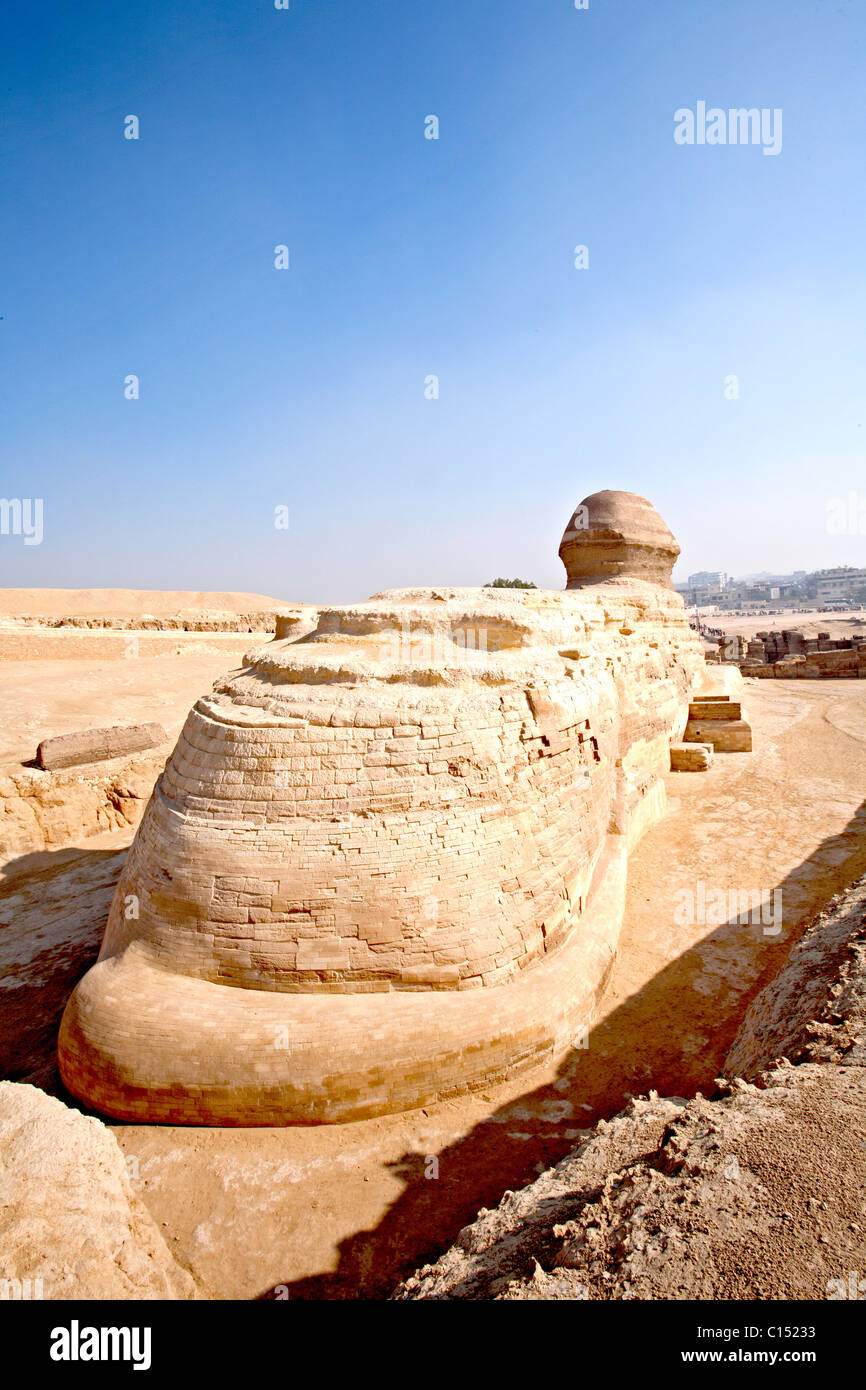The morning smoke clears to view the back end of the Sphinx at the base of the Pyramid of Khafre (Chephren) in Giza, Egypt

Image details
Contributor:
W. Michael Wiggins / Alamy Stock PhotoImage ID:
C15233File size:
56.8 MB (3.3 MB Compressed download)Releases:
Model - no | Property - noDo I need a release?Dimensions:
3639 x 5459 px | 30.8 x 46.2 cm | 12.1 x 18.2 inches | 300dpiDate taken:
22 January 2011Location:
Giza Plateau, EgyptMore information:
The Great Sphinx of Giza, commonly known as the Sphinx, is a statue of a reclining a sphinx (a mythical creature with a lion's body and a human head, in this case) that stands on the Giza Plateau on the west bank of the Nile in Giza, Egypt. It is thought to be the largest monolith statue in the world as well as the oldest monumental sculpture. It's commonly believed to have been built by ancient Egyptians of the Old Kingdom at the time of pharaoh Khafra. The Sphinx is located beside the pharaoh's Valley Temple and It was sculpted from an outcropping of limestone and represented the sun god. It's features were probably those of Chephren, the builder of the second pyramid at Giza. While it has a god's face, it has a lion's body. The nose on the face is missing. I was thought to have be hit by a cannon ball fired by Nepoleon's Army during the Battle of the Pyramids in 1798. This story is only legend as sketches of the Sphinx made in 1737 and published in 1755, prior to the French invasion, illustrate the Sphinx already without a nose. It has been said vandals destroyed the nose.